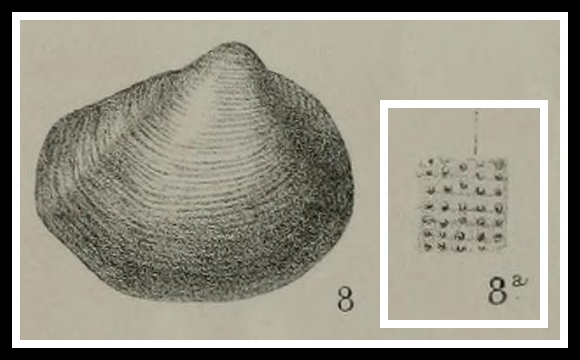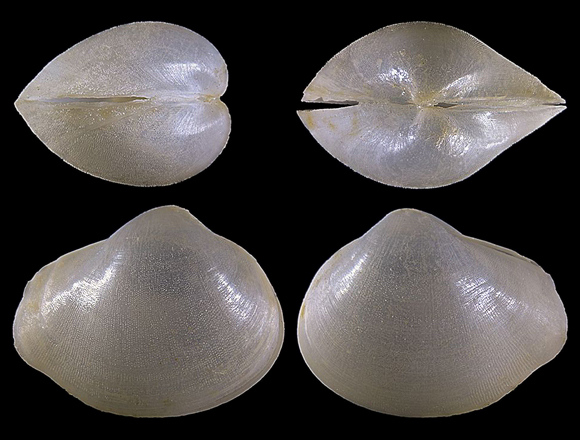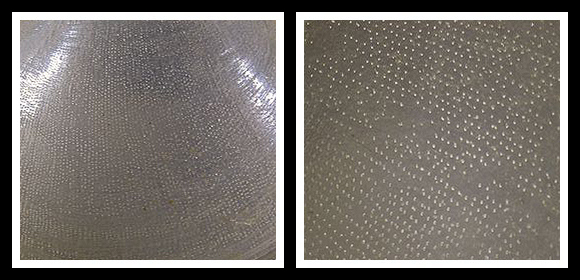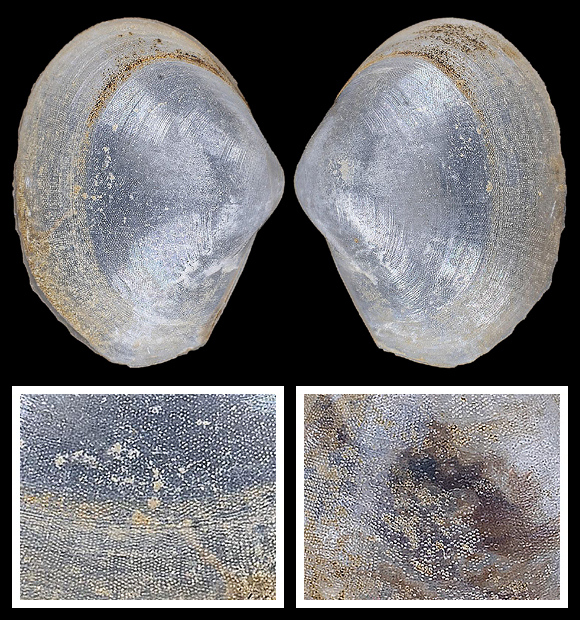
Cantabrian Sea to Canarias, Azores to Mediterranean. Jeffreys mentions it as coming also from the Gulf of Mexico, and Dall found it from off Florida. The depths range from about 200m to 1350m (Portugal, ‘Travailleur’, 1882).
Original taxon: Poromya neaeroides.
Above, the shell in J. G. Jeffreys: “On the Mollusca procured during the ‘Lightning’ and ‘Porcupine’ Expeditions, 1868-70”, Proceedings of the Zoological Society of London for the year 1881, plate LXX.

Jeffreys, p.936 of the Proc. Zool.: « The present species differs from P. granulata in having greater breadth in proportion to the length, in not being strongly angulated on the posterior side, and especially in the sculpture, which consists of close-set longitudinal lines of minute prickly tubercles instead of irregularly disposed granules ».
Above and below: 500m deep, Capraia Isola, Archipelago Toscano, W. Italy. 11,8mm. Original pictures provided by A. Nappo (IT) – (CC BY-NC-SA).

« Shell thin, whitish, semitransparent, ovate in outline, slightly inequivalve, dorsal margin of right valve overlapping the left valve. Inequilateral, rounded anteriorly, slightly rostrate, subtruncate posteriorly. Antero-dorsal margin straight; postero-dorsal margin slightly convex or straight; umbo situated anterior to vertical midline of shell. Antero-ventral margin rounded, postero-ventral margin nearly straight. Umbo prosogyrate, not very prominent. Sculpture consisting of faint growthlines and densely set minute granules in radial rows. A rib extends along postero-dorsal margin. Ligament elongate, slightly sunken. Hinge feeble; left valve with a protruding posterior dorsal margin; right valve with an erect cardinal tooth. Interior glossy. » – E. M. Krylova: “Bivalves of seamounts of the north-eastern Atlantic. Part I”, Biogeography of the North Atlantic seamounts, Moscow 2006, p.87.
Detail of the microsculpture.

– (CC BY-NC-SA) –